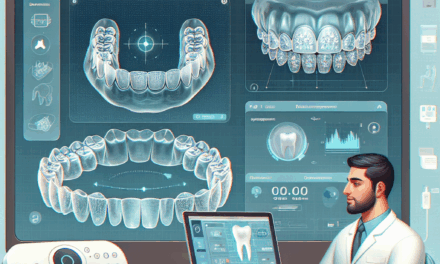Enhance Healthcare Cybersecurity Through Passwordless Authentication
In an era where digital transformation is reshaping the healthcare landscape, cybersecurity has emerged as a critical concern. The healthcare sector is particularly vulnerable to cyberattacks due to the sensitive nature of patient data and the increasing reliance on technology. Traditional authentication methods, primarily based on passwords, are proving inadequate in safeguarding this vital information. Passwordless authentication offers a promising solution to enhance cybersecurity in healthcare settings. This article delves into the significance of passwordless authentication, its benefits, challenges, and implementation strategies, providing a comprehensive overview of how it can bolster healthcare cybersecurity.
The Importance of Cybersecurity in Healthcare
Cybersecurity in healthcare is not just a technical issue; it is a matter of patient safety and trust. The healthcare industry has become a prime target for cybercriminals due to the wealth of personal and financial information it holds. According to a report by the Ponemon Institute, the healthcare sector experienced a 55% increase in data breaches from 2019 to 2020, with an average cost of $7.13 million per breach. This alarming trend underscores the need for robust cybersecurity measures.
Several factors contribute to the heightened risk of cyberattacks in healthcare:
- Valuable Data: Patient records contain sensitive information, including Social Security numbers, medical histories, and financial details, making them highly valuable on the black market.
- Regulatory Compliance: Healthcare organizations must comply with regulations such as HIPAA (Health Insurance Portability and Accountability Act), which mandates strict data protection measures.
- Increased Connectivity: The rise of Internet of Medical Things (IoMT) devices has expanded the attack surface, creating more entry points for cybercriminals.
- Human Error: Employees are often the weakest link in cybersecurity, with phishing attacks and poor password practices leading to breaches.
Given these challenges, healthcare organizations must adopt advanced cybersecurity strategies to protect sensitive data and maintain patient trust. Passwordless authentication is one such strategy that can significantly enhance security while improving user experience.
Understanding Passwordless Authentication
Passwordless authentication is an innovative approach that eliminates the need for traditional passwords, relying instead on alternative methods to verify user identity. This can include biometrics (fingerprints, facial recognition), hardware tokens, or one-time codes sent to trusted devices. The primary goal is to enhance security while simplifying the user experience.
There are several types of passwordless authentication methods:
- Biometric Authentication: Utilizes unique biological traits such as fingerprints, facial recognition, or iris scans to authenticate users.
- Hardware Tokens: Physical devices that generate one-time codes or use cryptographic keys to verify identity.
- Magic Links: Email or SMS links that allow users to log in without a password by clicking on a secure link.
- Push Notifications: Users receive a push notification on their mobile device to approve or deny a login attempt.
By eliminating passwords, organizations can reduce the risk of credential theft, phishing attacks, and other common cyber threats. Passwordless authentication not only enhances security but also streamlines the login process, improving user satisfaction and productivity.
Benefits of Passwordless Authentication in Healthcare
Implementing passwordless authentication in healthcare settings offers numerous benefits that can significantly enhance cybersecurity and operational efficiency. Here are some key advantages:
- Enhanced Security: Passwordless methods reduce the risk of password-related breaches, such as phishing and credential stuffing attacks. With no passwords to steal, cybercriminals face greater challenges in gaining unauthorized access.
- Improved User Experience: Passwordless authentication simplifies the login process, reducing friction for healthcare professionals who need quick access to patient data. This can lead to increased productivity and better patient care.
- Reduced IT Costs: Managing password resets and related support requests can be costly for IT departments. Passwordless solutions can decrease the number of help desk calls related to password issues, freeing up resources for other critical tasks.
- Compliance with Regulations: Passwordless authentication can help healthcare organizations meet regulatory requirements for data protection and privacy, such as HIPAA, by implementing stronger security measures.
- Scalability: As healthcare organizations grow and evolve, passwordless authentication solutions can easily scale to accommodate new users and devices without the complexities associated with traditional password management.
These benefits make passwordless authentication an attractive option for healthcare organizations looking to enhance their cybersecurity posture while improving operational efficiency.
Challenges of Implementing Passwordless Authentication
While passwordless authentication offers significant advantages, its implementation is not without challenges. Healthcare organizations must navigate several obstacles to successfully adopt this technology:
- Integration with Legacy Systems: Many healthcare organizations rely on legacy systems that may not support modern authentication methods. Integrating passwordless solutions with these systems can be complex and costly.
- User Acceptance: Employees may be resistant to change, especially if they are accustomed to traditional password-based systems. Effective training and communication are essential to ensure user buy-in.
- Cost of Implementation: While passwordless solutions can reduce long-term costs, the initial investment in technology and training can be significant, particularly for smaller healthcare organizations.
- Security Concerns: Although passwordless methods enhance security, they are not immune to risks. For example, biometric data can be spoofed, and hardware tokens can be lost or stolen. Organizations must implement additional security measures to mitigate these risks.
- Regulatory Compliance: Ensuring that passwordless authentication methods comply with industry regulations can be challenging, particularly as regulations evolve and new standards emerge.
Addressing these challenges requires careful planning, stakeholder engagement, and a commitment to ongoing education and training. By proactively tackling these issues, healthcare organizations can successfully implement passwordless authentication and reap its benefits.
Case Studies: Successful Implementation of Passwordless Authentication in Healthcare
Several healthcare organizations have successfully implemented passwordless authentication, demonstrating its effectiveness in enhancing cybersecurity. Here are a few notable case studies:
Case Study 1: A Large Hospital Network
A large hospital network in the United States faced significant challenges with password management, including frequent data breaches and user frustration. The organization decided to implement a passwordless authentication solution using biometric technology and hardware tokens.
After conducting a thorough assessment of their existing systems, the hospital network integrated the passwordless solution with their electronic health record (EHR) system. Employees were trained on the new technology, and the organization communicated the benefits of the change to encourage acceptance.
As a result of this implementation, the hospital network reported a 70% reduction in password-related security incidents within the first year. Additionally, user satisfaction improved significantly, with staff members appreciating the ease of access to patient data without the hassle of remembering complex passwords.
Case Study 2: A Telehealth Provider
A telehealth provider specializing in mental health services recognized the need for enhanced security measures to protect sensitive patient information. The organization opted for a passwordless authentication solution that utilized push notifications and biometric verification.
The implementation process involved collaborating with IT and clinical staff to ensure seamless integration with existing telehealth platforms. The provider also conducted user training sessions to familiarize employees with the new authentication methods.
Following the implementation, the telehealth provider experienced a significant decrease in unauthorized access attempts and reported improved compliance with HIPAA regulations. Patients also expressed greater confidence in the security of their data, leading to increased engagement with telehealth services.
Case Study 3: A Regional Health System
A regional health system faced challenges with password fatigue among its staff, leading to poor password practices and increased security risks. To address this issue, the organization implemented a passwordless authentication solution that combined biometric authentication with magic links sent via email.
The health system conducted a pilot program with a select group of users before rolling out the solution organization-wide. Feedback from the pilot program was used to refine the implementation process and address any concerns raised by staff.
After full implementation, the regional health system reported a 50% decrease in help desk calls related to password issues and a notable improvement in overall cybersecurity posture. The organization also benefited from enhanced user experience, as staff members could access critical systems quickly and securely.
Best Practices for Implementing Passwordless Authentication in Healthcare
To successfully implement passwordless authentication in healthcare settings, organizations should follow these best practices:
- Conduct a Risk Assessment: Before implementing passwordless solutions, conduct a thorough risk assessment to identify vulnerabilities and determine the most suitable authentication methods for your organization.
- Engage Stakeholders: Involve key stakeholders, including IT, clinical staff, and management, in the planning and implementation process to ensure buy-in and address concerns.
- Provide Comprehensive Training: Offer training sessions to educate employees about the new authentication methods, emphasizing the benefits and addressing any potential challenges.
- Implement Multi-Factor Authentication (MFA): Consider combining passwordless authentication with additional security measures, such as MFA, to further enhance security and protect sensitive data.
- Monitor and Evaluate: Continuously monitor the effectiveness of the passwordless authentication solution and gather feedback from users to identify areas for improvement.
By following these best practices, healthcare organizations can effectively implement passwordless authentication and strengthen their cybersecurity defenses.
Conclusion
As the healthcare industry continues to embrace digital transformation, the need for robust cybersecurity measures has never been more critical. Passwordless authentication presents a viable solution to enhance security while improving user experience. By eliminating the vulnerabilities associated with traditional password-based systems, healthcare organizations can better protect sensitive patient data and maintain compliance with regulatory requirements.
While challenges exist in implementing passwordless authentication, the benefits far outweigh the risks. Successful case studies demonstrate that organizations can achieve significant improvements in security and user satisfaction through thoughtful planning and execution. By adopting best practices and engaging stakeholders throughout the process, healthcare organizations can effectively enhance their cybersecurity posture and ensure the safety of patient information in an increasingly digital world.
In conclusion, embracing passwordless authentication is not just a technological upgrade; it is a strategic imperative for healthcare organizations committed to safeguarding patient data and fostering trust in an era of digital healthcare.





